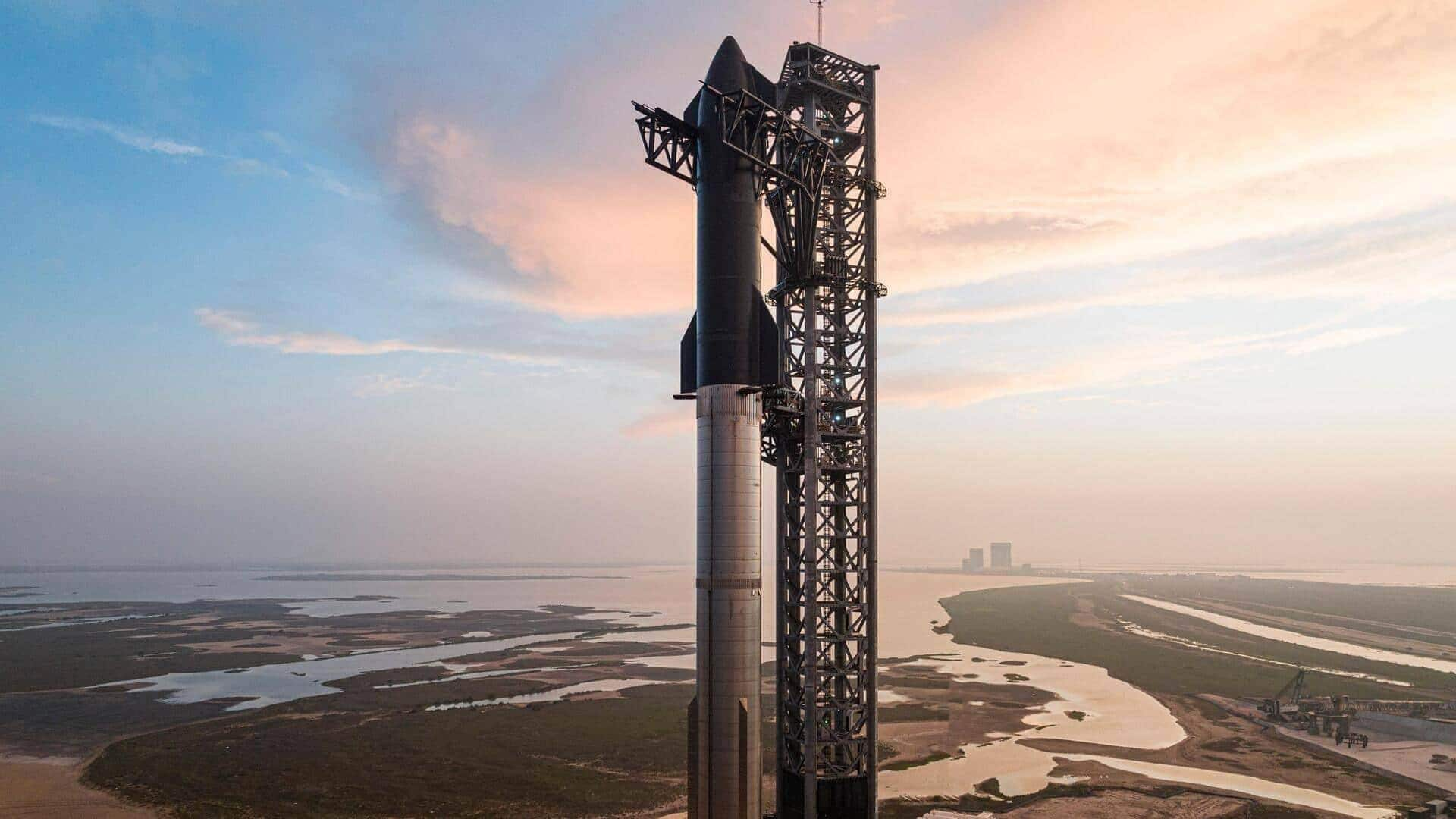
SpaceX delays Starship launch for 2nd time in 2 days
What's the story
SpaceX has postponed the launch of its massive Starship rocket from Texas once again, this time due to unfavorable weather conditions. The decision comes just a day after another delay caused by a liquid oxygen leak at the Starship launchpad. The postponements are part of a series of challenges that Elon Musk's company has faced in its quest to make the rocket system reusable.
Launch details
Musk remains optimistic about future Starship launches
The 232-foot tall Super Heavy booster and its upper half, the 171-foot tall Starship, were scheduled to launch from Starbase rocket facilities at 7:30pm local time. However, the company announced on X that it was "standing down from today's flight test attempt due to weather." Despite these setbacks, Musk remains optimistic about future Starship launches. He recently predicted that "in about six or seven years," there will be days when Starship launches more than 24 times in a single day.
Strategic importance
NASA plans to use Starship for crewed Moon landing
The development of Starship is crucial for SpaceX's launch business and Musk's ambition to send humans to Mars. NASA also plans to use this rocket as early as 2027 for its first crewed Moon landing since the Apollo program. Furthermore, SpaceX's Starlink satellite internet business, a major revenue source, depends on the success of Starship. Musk intends to use it for launching larger batches of Starlink satellites into space.
Development strategy
SpaceX's test-to-failure development approach
SpaceX follows a capital-intensive test-to-failure development approach, where new iterations of rocket prototypes are flown to their technical limits. However, early flight failures prevent SpaceX from gathering vital technical data needed for advancing the rocket's design. The latest iteration of Starship is more capable than its predecessors with features like increased thrust, a potentially more resilient heat shield and stronger steering flaps crucial to atmospheric reentry.